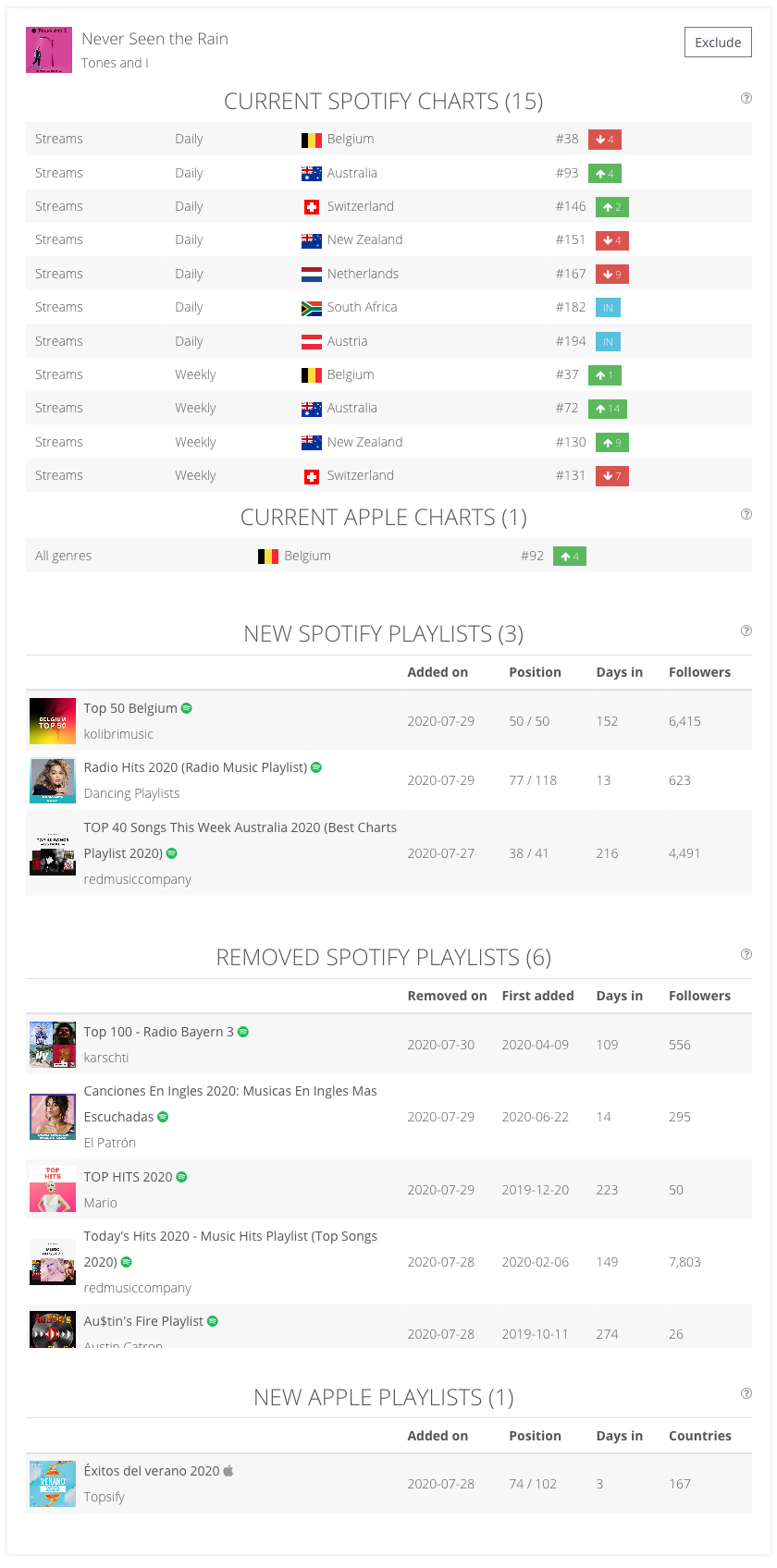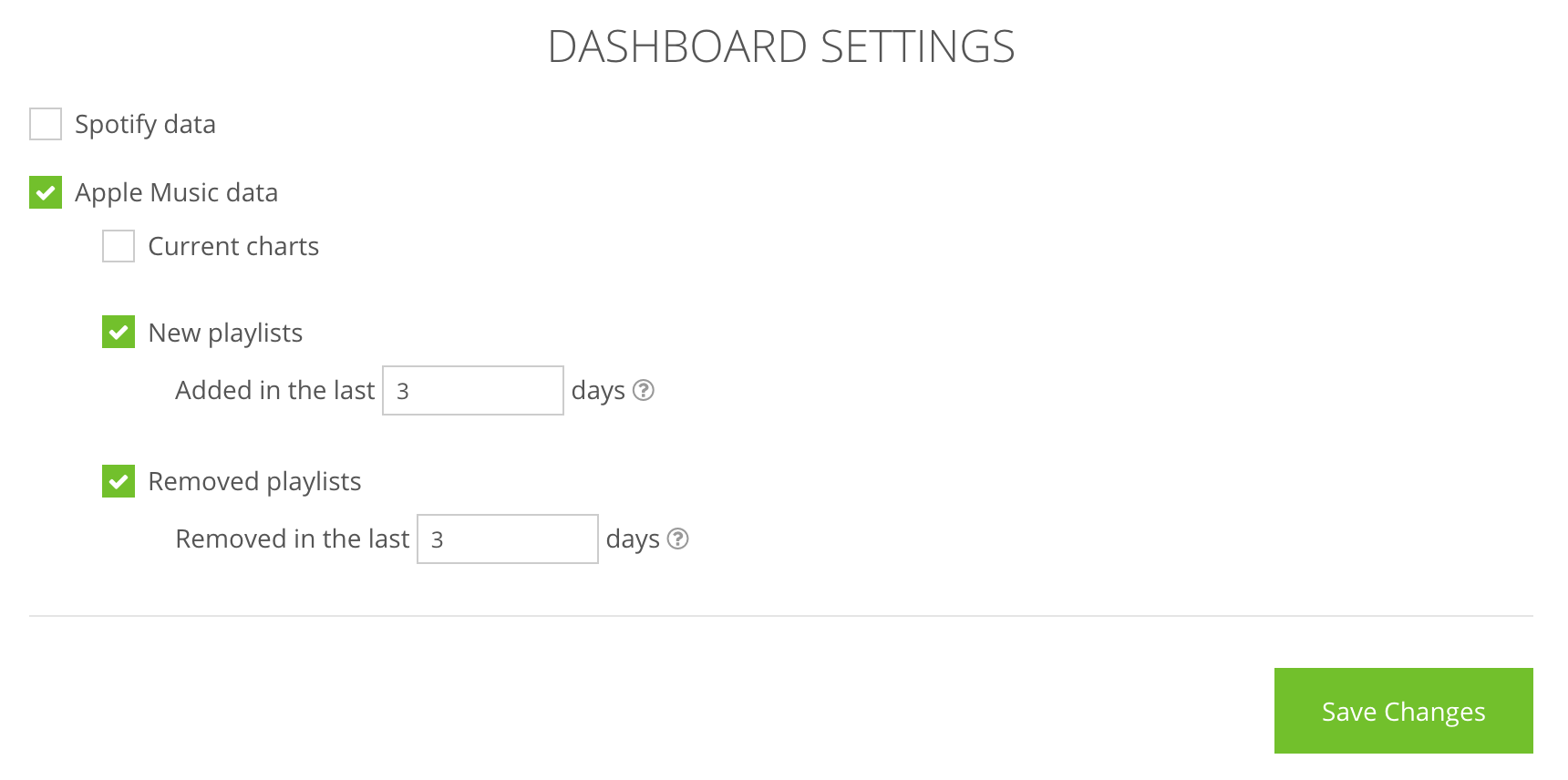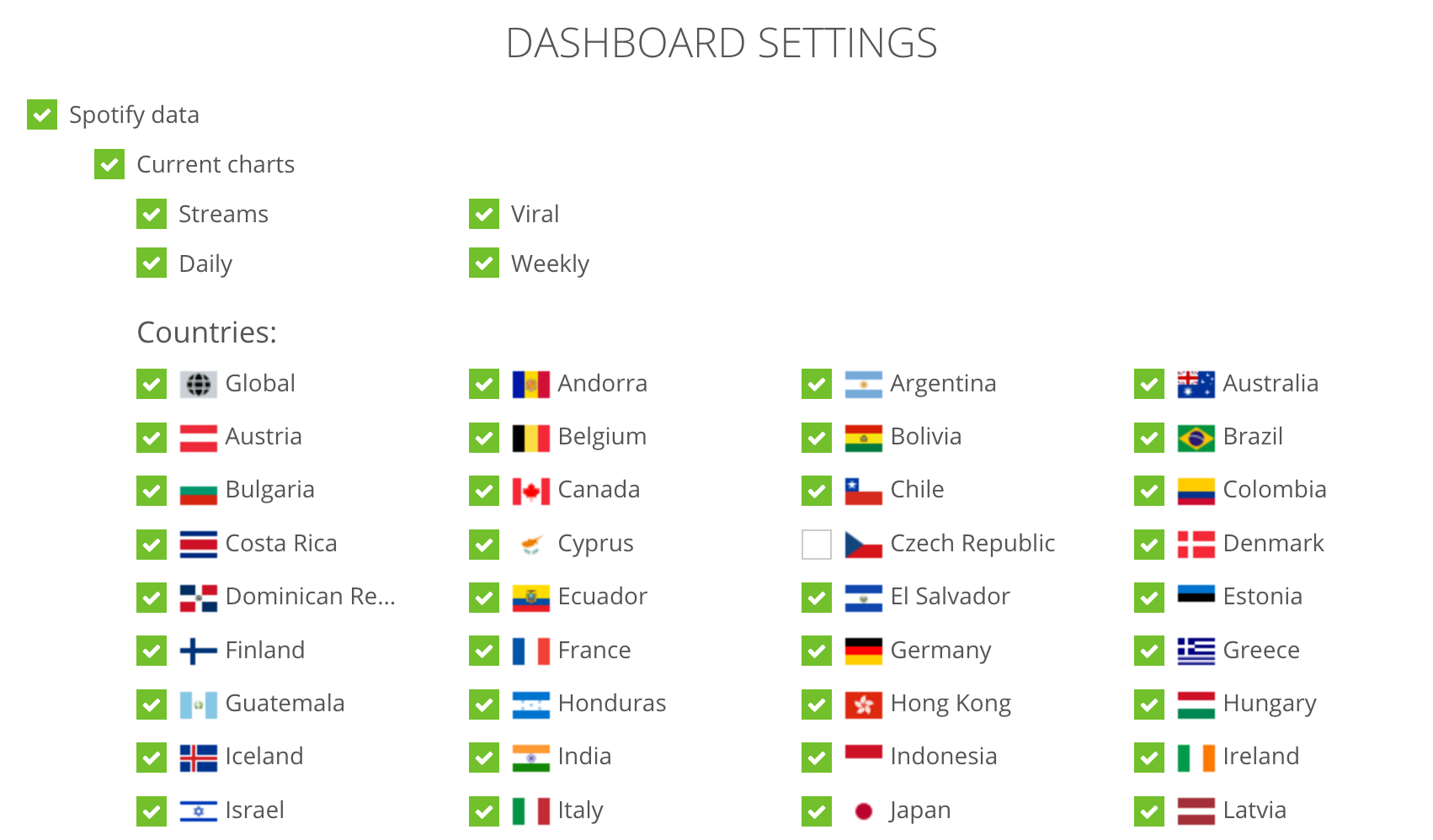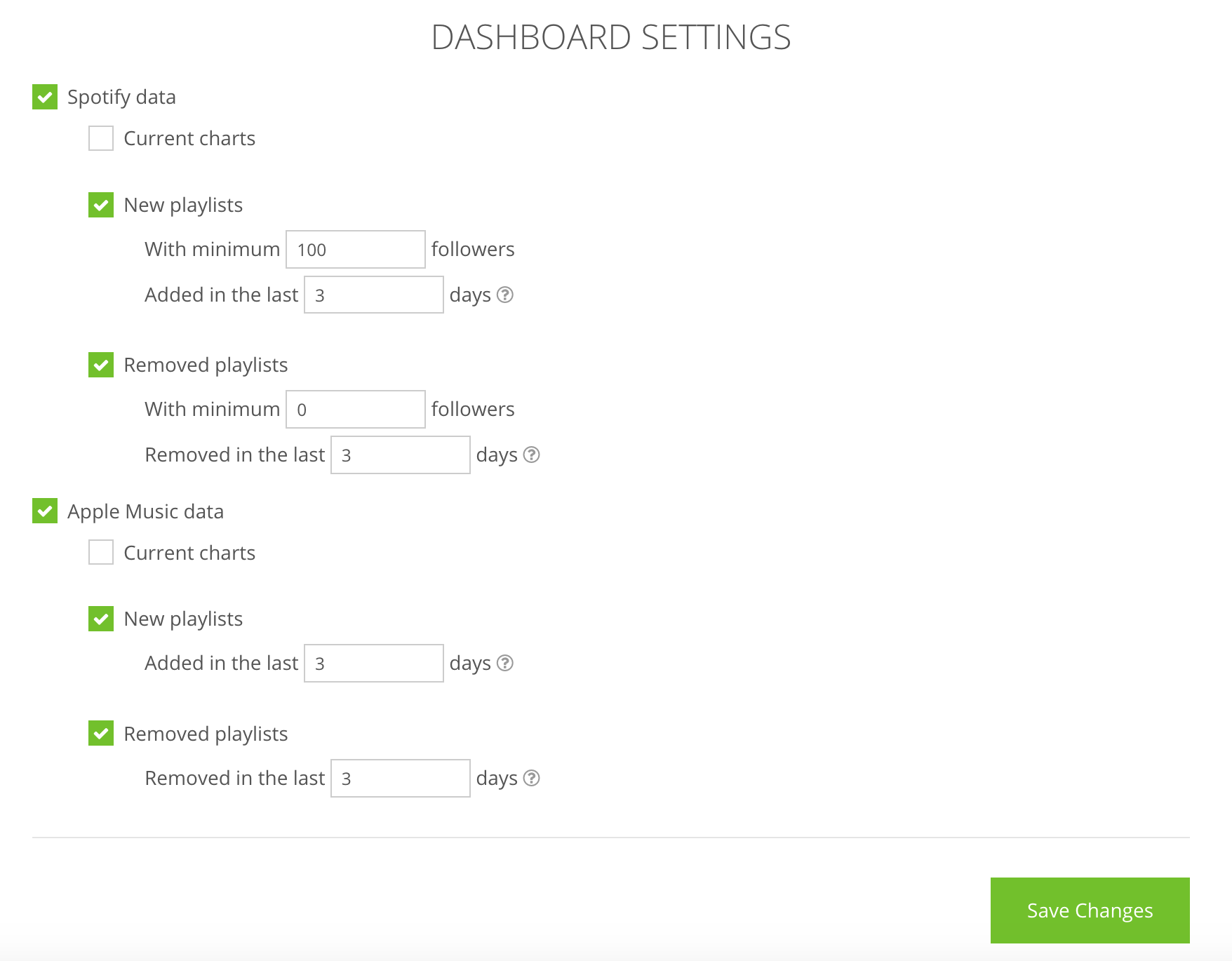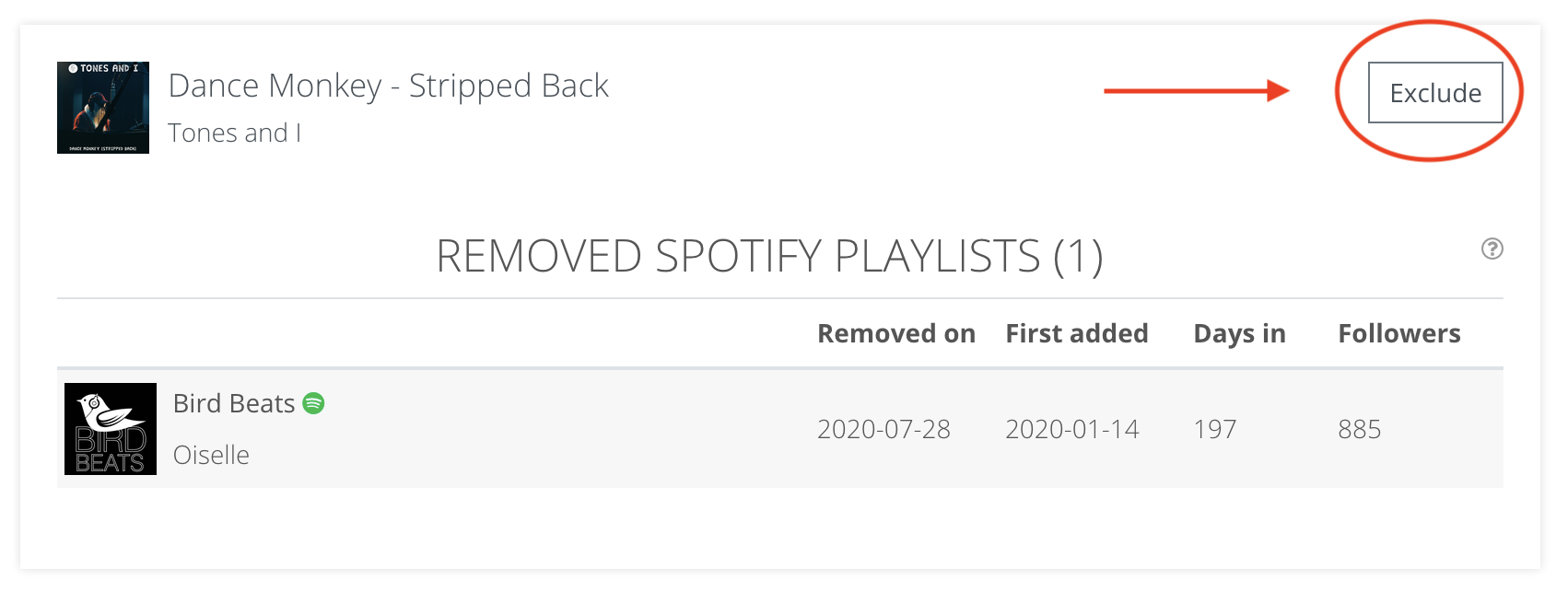Introducing the Dashboard
Published in Getting Started
Checking data for each track one by one can be time consuming if you are monitoring multiple tracks at the same time. To make this process easier, we built the Dashboard: one page that will show you all the data you need.
First of all, the dashboard is filled with data (charts and playlists) from all the items that you follow. When you follow a track, the data from this track will appear in your dashboard. If you follow an artist, the data from all the tracks of this artist will be in your dashboard. At some point, the amount of data could become too big, so we built plenty of settings and filters for you, we will come back to this in a minute.
The dashboard is split in 3 sections: All, Charts, Playlists. By default this is the 'All' view that is displayed, but you can switch to other views as you wish from the menu on the left. Charts view will only display charts information, and the Playlists view will only display ... playlist information, you guessed it right.
The dashboard will load the data incrementally for each track/artist you follow, with the tracks being sorted alphabetically. Here is how a track looks like in the dashboard:
We display current charts positions for each platform, as well as recently added playlists and recently removed playlists. 'Recently' has a different meaning for each of our user, so you will be able to configure this, but the default value is 3 days. If you are sure to check your dashboard every day, maybe you would want to reduce this to one day. Or increase it if you plan to check your data only once a week, ...
As you probably noticed on the menu on the left, you can also restrict your dashboard to only one item from your favorites. That comes handy if you follow many artists but just want to look at the new data from one single artist.
Now that you have a global view on what is the dashboard, let's see how you can configure it to make it suit your need perfectly. Just hit the Settings menu on the left.
You can completely enable/disable a platform. For example, if you only want to see Apple Music data in your dashboard and do not care about Spotify data, just uncheck the Spotify checkbox and we will not show Spotify data in your dashboard anymore. Pay attention that those settings only apply on the dashboard. If you want to completely disable a platform from everywhere on our website, you need to do it in your general settings, as explained in the account creation process.
For each platform, you can enable/disable the current charts positions. When it is enabled, you will be able to filter by chart type (for example on Spotify: streams or viral, daily or weekly), by countries or by genre (only for Apple Music). By default, we enabled all type of charts and all countries. for Apple Music however, as there are thousands of different charts each day (due to the combination of genres and countries), we only enabled the general charts without any genre specified (checkbox 'All genres'). If you are interested in charts for a specific genre, for example 'Dance' or 'Country', feel free to activate it.
After that come the playlist settings. For each platforms, two categories of playlists data exists: new playlists, that will list playlists that currently contains your track, and removed playlists, that will list playlists that do not contain your track anymore. For those two categories, you can decide the time window you need, as you probably do not want to see all added/removed playlist since the track released - the goal is to keep your dashboard short and easy to read. By default we show data from the last 3 days, but you can change it for a value between 1 and 31 days.
For Spotify playlists, you can also set a followers threshold. As we track many Spotify playlists, your track is often added to playlists that have a very low count of followers, so those playlists are probably not that interesting for you. Therefore we added this filter so that you only see what you need in your dashboard, for example playlists with at least 100 followers. This setting applies only on the dashboard, so you would still be able to see smaller playlists on the track page of course.
One last thing about the dashboard: when you follow an artist, the data from all the tracks of this artist appear in your dashboard. That is not always ideal as an old track could be added in a playlist, and you are currently not interested in monitoring that track in particular. That's ok, we've got you covered as you can exclude tracks from your dashhboard. Just click on the 'Exclude' button at the top right of the track panel and you won't see this track anymore in your dashboard. This track exclusion applies for both the Dashboard and the Daily Digest. But no worries, you can go back anytime: all your track exclusions are listed in your account profile and you can re-include the tracks whenever you want.
Now that you are ready to configure and use your dashboard, let's see how the Daily Digest works.


